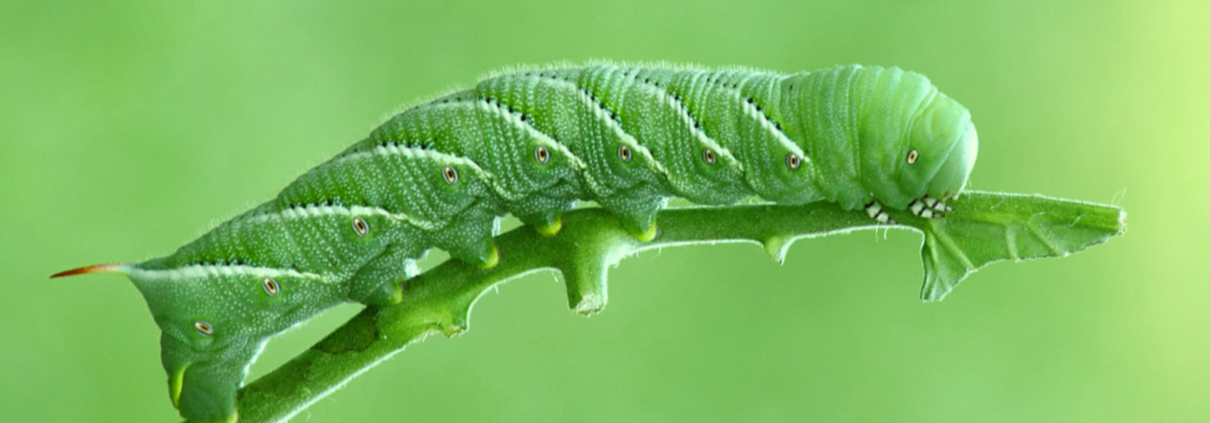How do you keep Hornworms Alive?
For reptile and amphibian enthusiasts, live hornworms (the larval stage of Manduca sexta, the Carolina Sphinx moth) are a prized feeder insect. Their vibrant green color, large size, soft bodies, and high moisture/nutritional content make them irresistible and beneficial for many pets, like bearded dragons, chameleons, and frogs. However, these fast-growing caterpillars have specific needs. Understanding the hornworm life cycle and providing proper care is essential to keep them healthy and nutritious for your pet until feeding time.
Why Proper Care Matters
Hornworms grow incredibly rapidly. Purchased as small caterpillars, they can reach full size (3-4 inches) in just 1-2 weeks under ideal conditions. This rapid growth means they consume vast amounts of food and generate significant waste. Without the right environment and diet, they can quickly become stressed, dehydrated, malnourished, or succumb to disease. Keeping them healthy ensures they remain a safe and optimal food source for your pet.
Essential Care for Live Hornworms
The Right Container
Ventilation is Crucial
Use a well-ventilated container. Plastic containers specifically designed for hornworms or larger critter keepers with mesh lids are ideal. Avoid completely sealed containers – stagnant, humid air promotes bacterial and fungal growth (often seen as black spots or foul odors).
Size Matters
Provide enough space for the number of worms. Overcrowding leads to stress, cannibalism, and rapid fouling of their environment. A container several times taller than the worms is best as they often climb.
Temperature Control
Cool is Key
Hornworms thrive at cooler temperatures compared to many feeder insects. The optimal range is 55°F – 65°F (13°C – 18°C).
Slow Growth
Keeping them in this range significantly slows down their metabolism and growth rate, extending their usable lifespan as feeders. Avoid room temperature (70°F+), as this speeds growth dramatically, shortening their shelf life to just days.
The Refrigerator Trick
The best place to store hornworms is often the main compartment of your refrigerator (NOT the freezer!). Ensure the container has adequate ventilation holes/mesh even in the fridge. Check them daily.
Humidity & Hydration (It’s All About the Food)
No Water Dishes
Never provide a water dish. Hornworms get 100% of their necessary moisture from their food. Adding water leads to drowning or promotes mold.
Specialized Diet is Non-Negotiable
This is the MOST critical factor. DO NOT feed them lettuce, fruits, vegetables, or leaves from your garden.
Commercial Hornworm Diet
Feed them only the commercially prepared hornworm diet (usually a thick, green gel). This diet is scientifically formulated to provide perfect nutrition and hydration. It’s non-toxic to your pets and keeps the hornworms’ gut loaded with beneficial nutrients.
Feeding Method
Place a small cup or dish filled with the prepared diet gel firmly into the bottom of the container. Ensure it’s stable so the worms can easily access it without tipping it over. Replace the diet as soon as it’s consumed, dried out, or becomes excessively soiled (usually daily or every other day).
Cleanliness is Critical
Waste Management
Hornworms produce a lot of relatively solid, pellet-like frass (droppings). This waste accumulates quickly and creates an unhealthy environment.
Daily Spot Cleaning
Remove frass and any uneaten, dried, or moldy diet daily. Use tweezers or carefully tip the container to roll out the waste.
Container Refresh
If the container becomes excessively soiled or develops an odor, gently transfer the worms to a clean container with fresh diet. Avoid handling the worms directly if possible.
Understanding the Life Cycle for Timing
Knowing the hornworm life cycle helps you manage them effectively as feeders:
Egg
Tiny, round, greenish-yellow eggs laid on host plant leaves (not relevant for feeder care).
Larva (Hornworm)
This is the stage you purchase. They hatch tiny and grow rapidly through several molts (instars), becoming large, juicy caterpillars. This is the feeder stage. Your care focuses on maintaining them healthily in this stage as long as needed.
Pupa
When fully grown and under warmer conditions, they burrow into soil to pupate (transform). You generally want to avoid this stage for feeders.
Adult Moth
Emerges from the pupa to mate and lay eggs.
Key Takeaway for Pet Owners
Keep your live hornworms cool (55-65°F) and well-fed only on commercial hornworm diet to halt their progression through the life cycle. Warmth and inadequate diet will trigger them to pupate prematurely, making them unsuitable as feeders.
Handling and Feeding to Pets
- Gently pick up hornworms by hand or use soft tweezers. Avoid squeezing.
- Offer appropriately sized worms – smaller ones for smaller pets/juveniles.
- Remove any uneaten hornworms from your pet’s enclosure promptly, as their bites can irritate some reptiles.
By providing a cool, clean, well-ventilated environment and feeding exclusively the proper commercial diet, you can significantly extend the life and quality of your live hornworms. Understanding their rapid growth and the hornworm life cycle empowers you to manage them effectively, ensuring your scaly or amphibious friend gets the freshest, healthiest, and most nutritious feeders possible. Happy feeding!


Leave a Reply
Want to join the discussion?Feel free to contribute!